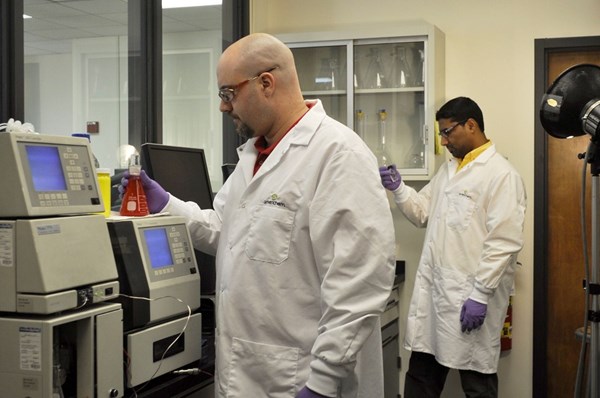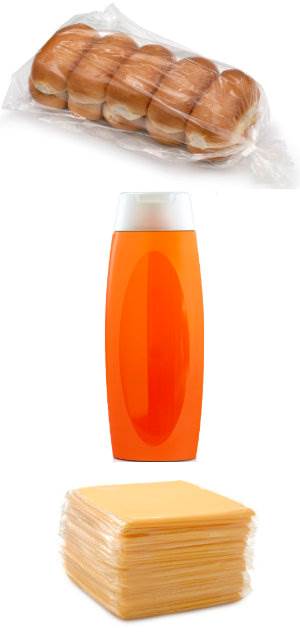A Discussion on the Value of Materials Testing
The top three reasons processors should consider materials testing.
The top three reasons processors should consider materials testing.
I found this brief discussion on how plastics processors can benefit from materials testing, offered to us by Americhem, Cuyahoga Falls, Ohio, extremely interesting. The company, a longtime global masterbatch and additives manufacturer, also made its entry into the plastics compounding business with three important acquisitions over the last four years.
The discussion features two of the company’s key research analytical scientists addressing why many processors are missing out by overlooking the value-added services from their material suppliers.
Pavan Maheswaram and Russ Howard, provide the brainpower behind Americhem’s Analytical and Physical Testing value-engineering services. Their key job: analyze raw materials and their customers’ products to assess quality and provide technical services.
“We spend most of our time developing, improving and implementing analytical testing methods, formulations and manufacturing processes,” says Maheswaram. Adds Howard, “There is a number of reasons we run tests, but we are ultimately providing technical data that customers and other Americhem experts can use to design, improve or otherwise engineer products.”
Their jobs entail doing testing for just about every business unit in the company. “We work with producers of residential and industrial carpets, vehicles and transportation equipment, architectural products, packaging, and specialty products—like nonwovens in dryer sheets. There is plenty of value to be found in taking a closer looks at the composition of your product, regardless of what that may be,” says Howard.
According to Maheswaram, the top three reasons for doing testing are:
Providing customers with documentation to serve as proof of a product’s composition or performance properties;
Troubleshooting—looking for problems or causes of problems with products or processes;
Assessing quality of certain types of products after they’ve been manufactured.
These pros conduct a broad spectrum of tests. With regards to analytical testing, says Maheswaram, thermal analysis is a core competency—whereby they look at how properties of materials change as temperature increases or decreases.
They also do a lot of spectroscopy work—seeing how light reacts with materials, when analyzing a masterbatch, as well as some microscopy when looking at particle sizes, for example. Adds Howard, “We are also focusing more on chromatography lately—separating mixtures to look at proportions of different ingredients to make sure ratios are right or to look for contamination that may have occurred during processing.”
How Long Does Testing Take?
It depends on the application and type of testing, according to these experts. They say the process could range from a few hours to perform some qualitative tests, with other tests taking much longer; generally, tests rarely take more than two weeks to perform, and almost never more than a month.
Greater Interest in Chromatography
A trend they are seeing, according to Maheswaram, is an increased interest in chromatography, as people want to better quantify and analyze the composition of various compounds. “We are also seeing interest in elemental testing super-microscopy, which requires very specialized equipment to carry out.”
Testing Challenges
Asked about testing challenges of which plastics processors should be aware, these pros say it’s important to know that testing methodologies are often proprietary. Says Howard, “If a company doesn’t have knowledge internally about how to conduct certain testing, it can be difficult to look up externally sometimes. You have to develop the tests yourself sometimes, so it isn’t as if someone can just decide one day they are going to conduct a new type of test.”
According to Maheswaram, not everyone has the same expertise. “It takes a lot of time, effort and money to establish certain testing capabilities, which is why we have people all over the world sending things to Americhem’s headquarters for testing.”
Don’t Miss Out
Asked what is the key takeaway from this discussion, Maheswaram advises not to overlook the value of testing—particularly if it is a service an “industry partner” provides at minimal cost.
“There is a lot you can learn from testing that can influence the way you design or improve your products, and you are missing out if you don’t take advantage.” Howard adds that processors should stay in touch with their material suppliers. “We are always looking for ways to expand our capabilities as we work with customers to overcome challenges, so don’t assume you know the full extent of a lab’s testing abilities. They might have changed since the last time you checked.”
For more on Americhem additives and compounds, see PT’s additives and materials database.

Related Content
Masterbatches Reduce Gloss in PLA and PETG 3D Printed Products
Insight Polymers & Compounding’s two low-gloss additive masterbatches shown to boost appearance of 3D printed objects.
Read MorePFAS-Free Processing Aid for Blown Film Extrusion
Ampacet’s new processing aid said to perform as well as fluoro-based PPAs in blown film.
Read MoreResins & Additives for Sustainability in Vehicles, Electronics, Packaging & Medical
Material suppliers have been stepping up with resins and additives for the ‘circular economy,’ ranging from mechanically or chemically recycled to biobased content.
Read MoreBASF to Purchase Pyrolysis Oil Produced From Waste Plastics
Agreement with Arcus Greencycling GMBH anticipates a volume of 100,000 ton/yr.
Read MoreRead Next
Understanding Melting in Single-Screw Extruders
You can better visualize the melting process by “flipping” the observation point so that the barrel appears to be turning clockwise around a stationary screw.
Read MorePeople 4.0 – How to Get Buy-In from Your Staff for Industry 4.0 Systems
Implementing a production monitoring system as the foundation of a ‘smart factory’ is about integrating people with new technology as much as it is about integrating machines and computers. Here are tips from a company that has gone through the process.
Read More

















.png;maxWidth=300;quality=90)






